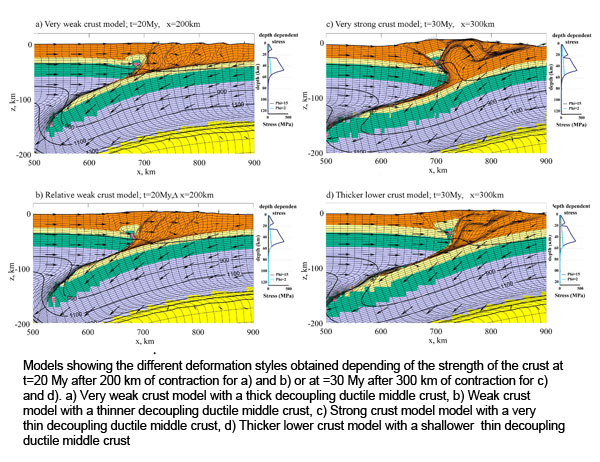Structural styles of mountain building:
Controls of rheological and rift inheritances
By:
Suzon Jammes
UTIG
| When: | Friday, August 30, 2013, 10:30 a.m. to 11:30 a.m. Join us for coffee beginning at 10:00 a.m. |
| Where: | Seminar Conference Room, 10100 Burnet Road, Bldg 196-ROC, Austin, Texas 78758 |
| Host: | Nick Hayman, UTIG |
Click for a Live Broadcast.

Abstract
The deep crustal structure of many orogens is now accessible owing to deep seismic reflection profiles combined with other geophysical methods. The diversity of observed orogenic crustal structures suggests that deformation processes that account for the formation of mountain belts differ from region to region and might also differ along strike of a single system. A range of parameters, including surface process efficiency and lithospheric scale inheritance, may provide a control on the structural style of mountain building. The relative importance of these controls is, however, still unclear. Numerous studies show that the relative strength of the frictional-plastic and viscous rheologies in the crust and mantle lithosphere provides a first order control on the deformation processes in extensional and contractional setting. Since, the strength of the crust and the mantle is strongly influenced by the temperature, the thickness and the composition of the crust and mantle lithosphere, and by inherited weaknesses, it strongly depends on the geodynamic setting. It is consequently expected to be different from one orogen to another and might explain the diversity of deformation styles. An idea that needs to be further investigated.
We use 2D thermo-mechanical models at lithospheric scale to study the effect of the strength of the upper/middle crust on the geometry of contractional systems. Moreover, if many orogens result from the inversion of rifting basins little is known about the effect of rift inheritance during inversion tectonics. The formation of rift basin or passive margin is consequently explicitly modeled and the results are then used as initial condition for lithospheric scale inversion, a procedure, which we call accordion tectonics. Model results are compared to the Zagros, the Alps and the Pyrenees for which the crustal structure is well constrained by geophysical data.
If this work demonstrates the first order control of crustal rheology on the structural style of mountain building, along strike structural variations are still poorly understood. The Pyrenean mountain chain, forming a narrow asymmetric doubly vergent orogenic wedge along the collision zone between the Iberian and the Eurasian plates, is a typical example of a mountain belt presenting lateral variation in structural style. Using a similar approach combined with geological-geophysical observations, we demonstrate that variation in crustal inheritance due to inherited Variscan crustal composition and accentuated during Mesozoic rifting might also explain the along strike structural variation observed in the Pyrenean chain.




